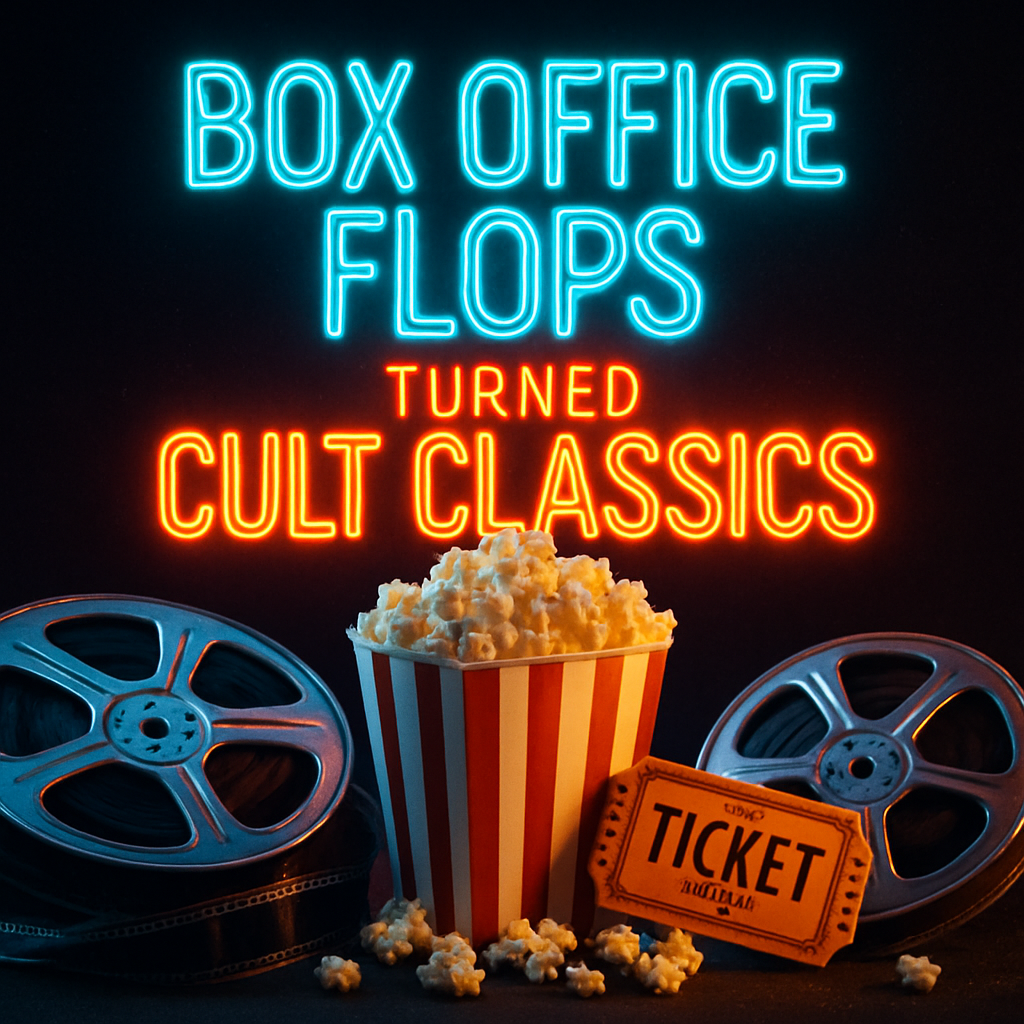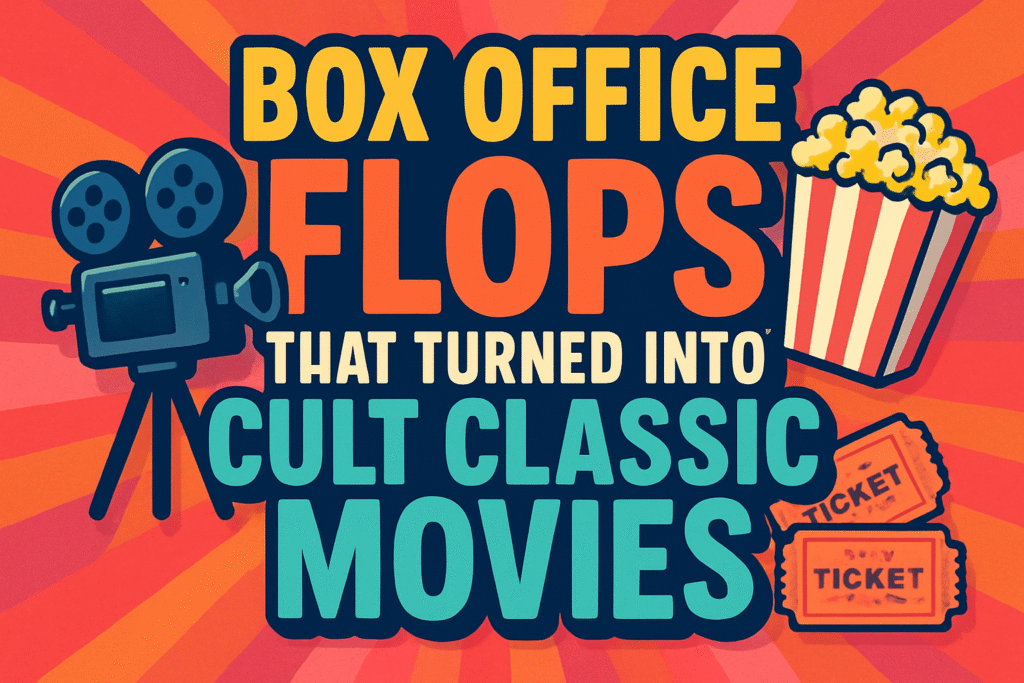
When a film fails at the box office, most industry insiders and audiences alike write it off as a lost cause. Yet, over the years, some of Hollywood’s—and even world cinema’s—greatest cultural treasures have risen from the ashes of financial disaster to achieve legendary status. These movies, misunderstood or mismarketed when released, eventually earned a passionate following, proving that time, context, and fandom can rewrite history. Here’s a look at how and why these cinematic failures became cult classics, and what makes them so enduringly special.
What Turns a Flop Into a Cult Classic?
Not every box office failure is destined for cult greatness. For a film to make that journey, a few key ingredients are often present:
- Ambition Over Mainstream Appeal: These movies often dared to tell stories or employ styles too daring, subversive, or ahead of their time for mass acceptance.
- Misguided Marketing: Studios misread target audiences or fail to capture the unique spirit of the film in their promotional efforts.
- Critical or Audience Misunderstanding: Many initially bomb because they’re too dark, weird, or complex.
- Rescue by Home Media/Fandom: Through VHS, DVD, streaming, and repeat cable screenings, the right fans connect and spark cult adoration.
- Reassessment Over Time: Often, the context of the era or the sensibilities of critics and audiences shift, allowing for a more appreciative reappraisal.
Movies that fail spectacularly can inspire a kind of loyalty that routine hits rarely achieve. The bigger the risk a filmmaker takes, the more likely their work endures—no matter how bad the initial numbers might be.
Hallmark Examples of Flops to Cult Legends
Blade Runner (1982)
Ridley Scott’s neo-noir sci-fi epic faced studio interference and mixed reviews, earning around $39 million on a $28 million budget in a year dominated by optimistic blockbusters like ‘E.T.’. Its slow pace and philosophical storytelling divided audiences and critics alike. Yet, when the director’s cut was released and home media took off, the film found new appreciation for its visionary world-building and moral ambiguity. ‘Blade Runner’ today stands as both a foundational sci-fi text and an aesthetic template for decades of filmmaking.
The Thing (1982)
John Carpenter’s horror tale about shape-shifting aliens in Antarctica was dismissed on release as too grotesque and nihilistic, especially when compared to the optimistic tone of other summer hits. Financial disappointment followed, but the movie’s suspense, groundbreaking effects, and ambiguous ending proved irresistible to horror devotees. With time, obsessed fans turned ‘The Thing’ into a cult marvel, now routinely cited among the best horror films ever made.
Fight Club (1999)
David Fincher’s brutal satire on corporate life and primal rebellion initially confused audiences and critics, grossing just over its $63 million budget. Poor marketing and a polarising tone kept many away. Yet, in the DVD era, its quotable dialogue, layered storytelling, and visceral imagery propelled ‘Fight Club’ to iconic status among rebellious youth and cinephiles.
Donnie Darko (2001)
Richard Kelly’s dreamlike story, blending teen angst with time travel and surrealism, faced disaster after a post-9/11 release and earned only a modest return. The ambiguity and symbolism, perplexing at first, became fuel for internet theories, fan rewatches, and midnight screenings, solidifying its reputation as a touchstone for cult cinema.
Office Space (1999)
Mike Judge’s cubicle satire was all but ignored in theatres, but once DVDs circulated and cable marathons started, its sharp critique of corporate monotony exploded in popularity. Today, it’s a must-watch for anyone frustrated with workplace bureaucracy.
The Rocky Horror Picture Show (1975)
Initially dismissed as bizarre and unmarketable, this musical about campy horror and sexual liberation found life in interactive midnight screenings. Fan costumes, participation, and singalongs built it into a living phenomenon—a testament to the power of community in cinema.
The Shawshank Redemption (1994)
Despite multiple Oscar nominations and positive critical reviews, this Stephen King adaptation disappointed financially in its theatrical run. Re-releases, VHS rentals, and cable airings fostered a groundswell of support, making it a staple of “greatest movies ever” lists. reddit +1
Scott Pilgrim vs. the World (2010)
Edgar Wright’s genre-blending comic adaptation failed to reach broad audiences but charmed enough viewers to spawn a passionate online fanbase. Its unique style and inventive storytelling now inspire fan art, cosplay, and praise from new generations discovering the film.
Dredd (2012)
Overshadowed by poor marketing and box office confusion, ‘Dredd’ gained traction among fans of gritty sci-fi and action thanks to streaming and home media. Its faithful adaptation of comic lore proved enduring, with fans lobbying for sequels and spin-offs.
Hugo (2011)
Martin Scorsese’s heartfelt love letter to film history was considered too niche and detail-orientated for mainstream audiences and failed to recoup its budget. However, later appreciation for its artistry and historical references made it a cult favourite among cinephiles.
The Power of Fandom, Reappraisal, and Community
Cult classics don’t just survive—they inspire. With repeat viewings, fan theories, cosplay, and conventions, devoted audiences keep their treasured films alive for decades. Certain movies further benefit from director’s cuts or expanded editions that restore original vision and depth. Online forums, social media meme culture, and academic analyses help validate and celebrate what mainstream critics once missed.
Fandom isn’t merely about liking a film—it’s about building an ongoing community around it. Midnight screenings of ‘Rocky Horror’, forums dedicated to ‘Donnie Darko’, or annual conventions for ‘Blade Runner’ demonstrate how box office flops become the backbone of subcultures and generational identity. reddit +1
Lessons for Filmmakers and Audiences
1. Take Risks
Films offering something bold and singular may stumble at first, but niche appeal can turn into lasting cultural impact.
2. Ignore Early Numbers
Sometimes, commercial failure is only temporary, and it takes years—or decades—for true genius to be recognised.
3. Embrace the Fringe
The most unforgettable movies are, more often than not, those that reject safe formulas in favour of creativity and honesty.
4. Trust Your Audience
If a story is worth telling, the right viewers will find it—eventually.
Why We Love Cult Classics
The enduring appeal of these films is more than mere nostalgia. They challenge, provoke, and offer joy in ways mainstream cinema rarely captures. Their very status as underdogs endears them to viewers who see themselves reflected in their struggle and redemption. Each cult classic offers a lesson on the value of ambition, risk, and community—a testament that the true measure of artistic success isn’t found at the box office but in the hearts and minds of those it touches.
In the end, box office failure might just be the beginning of cinema immortality. The greatest stories are those that refuse to be forgotten—regardless of opening weekends or ticket returns.
Various Sources
- https://nofilmschool.com/box-office-bombs-cult-hits
- https://screenrant.com/movies-flopped-box-office-cult-classics/
- https://www.cbr.com/1990s-movies-box-office-flops-became-cult-classics/
- https://www.reddit.com/r/movies/comments/notw0a/what_are_some_films_that_kinda_bombed_at_the_box/
- https://www.buzzfeed.com/bendzialdowski/box-office-flops



